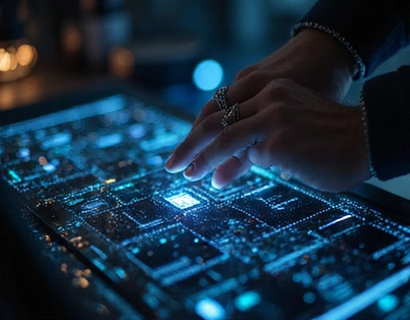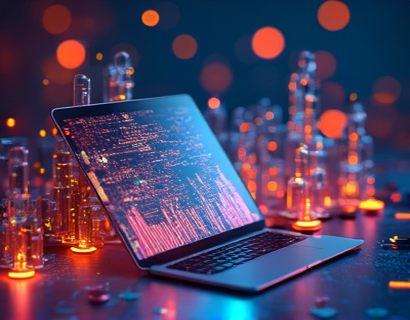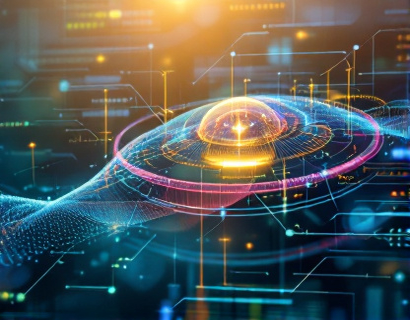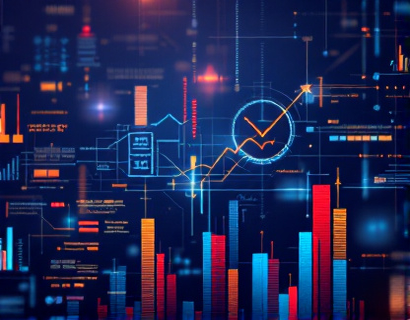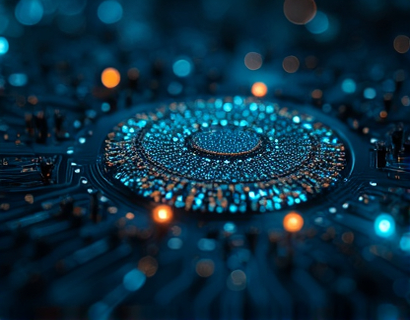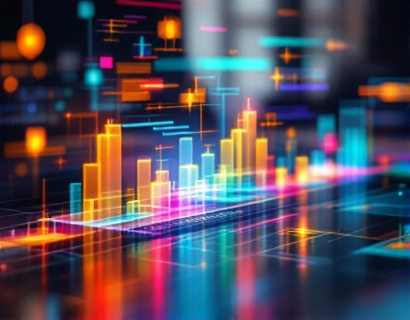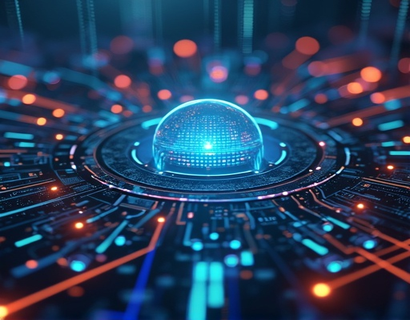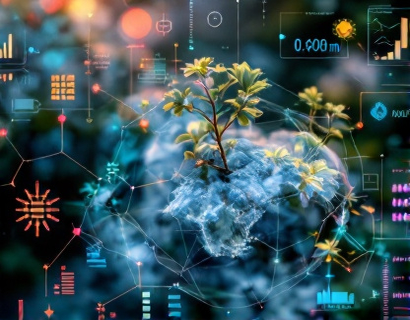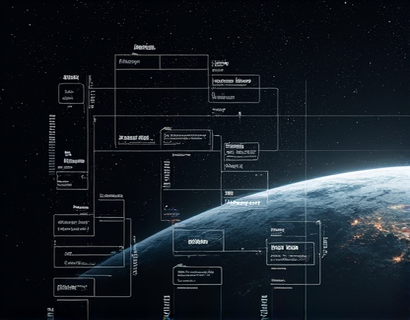AI and Crypto: A Synergistic Force Reshaping Digital Experiences
The intersection of artificial intelligence and cryptocurrency is giving rise to a new era of digital transformation, where seamless integration and advanced solutions are redefining user experiences and app interactions. This synergy is not just a technological curiosity but a powerful force that is set to revolutionize how we interact with digital platforms and services. As tech enthusiasts and innovators, understanding this convergence is crucial for anyone looking to stay ahead in the rapidly evolving landscape of connected technologies.
The integration of AI and crypto is multifaceted, touching various aspects of digital life from security and privacy to user experience and efficiency. At its core, this fusion leverages the strengths of both technologies: AI's ability to process vast amounts of data and learn from patterns, and crypto's decentralized, secure, and transparent nature. Together, they offer solutions that are not only more robust and efficient but also more intuitive and user-friendly.
Enhanced Security Through AI-Driven Crypto Solutions
One of the most significant benefits of combining AI and crypto is the enhancement of security measures. Traditional cryptographic methods, while robust, are increasingly being challenged by sophisticated cyber threats. AI brings a dynamic approach to security by continuously learning and adapting to new threats. Machine learning algorithms can detect anomalies and patterns indicative of fraudulent activities in real-time, providing a proactive defense mechanism.
For instance, AI-powered systems can monitor blockchain transactions and identify suspicious behavior that might indicate a 51% attack or other malicious activities. These systems can automatically trigger alerts and implement countermeasures, ensuring the integrity of the blockchain. Furthermore, AI can enhance the security of private keys and wallet management through biometric authentication and behavioral analysis, making it significantly harder for unauthorized access.
Improved User Experience with AI-Assisted Crypto Applications
The user experience in the crypto space is often marred by complexity and a steep learning curve. AI can significantly mitigate these issues by creating more intuitive and user-friendly applications. Chatbots powered by natural language processing (NLP) can provide instant customer support, answering queries and guiding users through complex processes with ease. These chatbots can understand natural language, making interactions more seamless and personalized.
Additionally, AI can optimize the user interface and experience by analyzing user behavior and preferences. For example, AI algorithms can recommend the most relevant crypto assets based on a user's trading history and market trends, simplifying the decision-making process. Personalized dashboards and real-time notifications can keep users informed about market movements and portfolio performance, enhancing their overall experience.
Efficient Trading and Investment Strategies with AI
AI is transforming the way traders and investors approach the crypto market. By analyzing vast amounts of historical and real-time data, AI algorithms can identify trends, predict price movements, and provide actionable insights. This capability is particularly valuable in the volatile crypto market, where timing and accuracy are crucial.
Automated trading bots powered by AI can execute trades based on predefined strategies, reducing emotional decision-making and increasing efficiency. These bots can operate 24/7, capitalizing on market opportunities that human traders might miss. Moreover, AI can help in risk management by setting stop-loss and take-profit orders, ensuring that trades are executed at optimal prices.
Portfolio Optimization and Asset Management
AI-driven portfolio optimization tools can analyze a wide range of factors, including market sentiment, technical indicators, and fundamental analysis, to create balanced and diversified investment portfolios. These tools can continuously monitor and adjust the portfolio to align with the investor's goals and risk tolerance, ensuring optimal performance over time.
Furthermore, AI can assist in asset management by providing insights into the most promising projects and tokens. By analyzing factors such as development activity, community engagement, and market adoption, AI can help investors identify undervalued assets with high growth potential. This data-driven approach can significantly enhance investment decision-making and increase the chances of successful outcomes.
Decentralized Applications and AI Integration
Decentralized applications (dApps) are at the forefront of the crypto revolution, offering decentralized alternatives to traditional centralized services. The integration of AI into dApps can further enhance their functionality and utility. For example, AI can improve content recommendation systems in decentralized social media platforms, ensuring users see relevant and engaging content.
In decentralized finance (DeFi), AI can optimize lending and borrowing processes by assessing creditworthiness and determining interest rates more accurately. Smart contracts can be enhanced with AI to automate complex financial operations, reducing the need for intermediaries and lowering transaction costs. This synergy can lead to more efficient and accessible financial services for a broader audience.
Privacy-Preserving Technologies with AI and Crypto
Privacy is a critical concern in the digital age, and the combination of AI and crypto offers powerful solutions to protect user data. Zero-knowledge proofs (ZKPs) are a cryptographic technique that allows one party to prove to another that a statement is true without revealing any information beyond the statement itself. When combined with AI, ZKPs can enable privacy-preserving machine learning models that train on sensitive data without exposing the data itself.
AI can also enhance privacy-focused crypto projects by improving data anonymization and encryption techniques. For instance, AI-driven encryption algorithms can adapt to new threats and ensure that data remains secure even against advanced attacks. This fusion can lead to the development of more private and secure communication channels, storage solutions, and identity verification systems.
Challenges and Considerations
While the integration of AI and crypto holds immense potential, it also comes with challenges that need to be addressed. One of the primary concerns is the computational resources required for AI algorithms, particularly those involving deep learning. Blockchain networks, especially those using proof-of-work consensus mechanisms, can be energy-intensive, leading to environmental concerns.
To mitigate these issues, the industry is exploring more energy-efficient consensus mechanisms like proof-of-stake (PoS) and hybrid models. Additionally, the development of AI algorithms that require less computational power, such as federated learning, can help reduce the environmental impact.
Another consideration is the regulatory landscape. As AI and crypto continue to evolve, regulatory bodies are starting to take notice, leading to increased scrutiny and potential restrictions. It is essential for developers and businesses to stay informed about regulatory changes and ensure compliance to avoid legal issues.
Future Prospects and Innovations
The future of AI and crypto integration is promising, with numerous innovations on the horizon. One area of excitement is the development of AI-powered decentralized autonomous organizations (DAOs). These organizations can leverage AI to make collective decision-making more efficient and transparent, reducing the need for centralized control and human bias.
Another promising direction is the integration of AI with the Internet of Things (IoT) in the crypto space. AI can optimize the management and interaction of IoT devices on blockchain networks, enabling smarter and more autonomous systems. This could have significant implications for smart cities, industrial automation, and home automation.
Furthermore, the emergence of AI-driven non-fungible tokens (NFTs) is opening new avenues for digital ownership and creativity. AI-generated art and unique digital assets can be tokenized on the blockchain, providing artists and creators with new ways to monetize their work and connect with audiences.
Conclusion
The convergence of AI and crypto is a transformative force that is reshaping the digital landscape. By enhancing security, improving user experiences, optimizing trading strategies, and enabling innovative applications, this synergy is paving the way for a more connected, efficient, and secure future. As tech enthusiasts and innovators, embracing these advancements and understanding their potential can provide a competitive edge in the ever-evolving world of technology.











